Mark Caney's Blog
January 10, 2025
Rare dolphin-like marine reptile fossil found in New Zealand
Ichthyosaurs are marine reptiles that evolved about 250 million years ago. Though they resemble dolphins, they have a completely different evolutionary lineage. They swam the oceans while dinosaurs ruled on land, dying out about 94 million years ago.
The New Zealand ichthyosaur was found on the Coverham Station farmstead in the Canterbury region, about 200km northeast of Christchurch.
Rocks from this region of the Clarence Valley date to the Cretaceous period (141–66 million years ago) when the area formed the bed of an ancient sea. The ichthyosaur fossil is 98 million years old.
Back then, New Zealand itself was further south and was part of the supercontinent Gondwana, joined with Australia, Antarctica and South America.
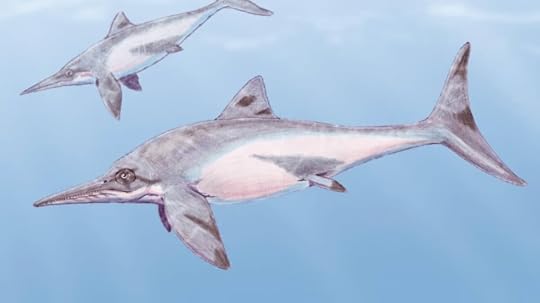
Marine reptiles from the “Age of Dinosaurs” have been found in New Zealand before. Among them is the oldest known marine reptile found in the southern hemisphere. But the new species provides a rare glimpse into ichthyosaurs of Eastern Gondwana. It is the first ichthyosaur found on New Zealand’s South Island.
The fossil is also the most completely preserved individual ichthyosaur found in New Zealand.
Full story: Cosmos
January 5, 2025
Fate of whales uncertain as marine zoo shuts
The fate of two killer whales is uncertain following the closure of a marine zoo in France on Sunday.
Campaigners and the zoo’s managers have been locked in disagreement about what should happen to the orca whales with the French government already blocking one proposal to rehome them.
Last month Marineland Antibes, located near Cannes in the French Riviera, said it would permanently shut on 5 January following new animal welfare laws.
The legislation, which bans the use of dolphins and whales in marine zoo shows, was passed in 2021 but comes into effect next year.
Marineland, which describes itself as the largest of its kind in Europe, currently keeps two killer whales – Wikie, 23, and her 11-year-old son Keijo.
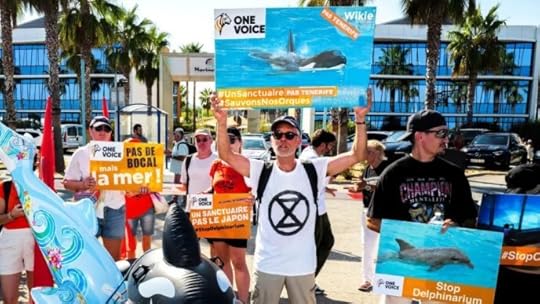
Campaigners want Wikie and Keijo to be sent to a sanctuary instead of zoos in Japan and Tenerife
Managers say shows featuring killer whales and dolphins attract 90% of Marineland’s visitors – and that without it the business isn’t viable.
Several destinations for the whales have been proposed but there is disagreement on where they should go and what should happen to them.
Most experts agree that releasing the two whales, which are Icelandic orcas specifically, into the wild would not be suitable as both were born in captivity and would not have the skills to survive.
“It’s a bit like taking your dog out of the house and sending him into the woods to live freely as a wolf,” says Hanne Strager.
In 2023 the marine biologist published The Killer Whale Journals, which details her decades long interest in the ocean predator and how they behave.
“Those whales, that have spent their entire lives in captivity, their closest relationship is with humans. They are the ones who have provided them with food, care, activities and social relations.
“Killer whales are highly social animals, as social as we [humans] are, and they depend on social bonds. They have established those bonds with their trainers … They depend on humans and that is the only thing they know.”
Full story: BBC
January 1, 2024
Perfect book to disappear into and get through a long airplane ride or two
Renowned underwater photographer Brandi Mueller recently read Dolphin Way and posted this review – thanks, Brandi!
“Really impressed by all the detail of a hypothetical dolphin culture and lots of great scientific information about the ocean and dolphins. It has several good messages weaved into the writing and a bit of drama, action, and even love. Every enjoyable. Perfect book to disappear into and get through a long airplane ride or two.”
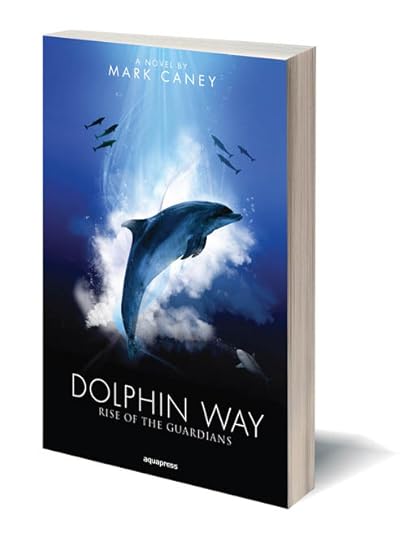
July 18, 2023
Dolphins are forever bound to sea — they’ve reached a point of no return
Embracing change and challenges fosters growth, but there’s no turning back once we cross certain thresholds.
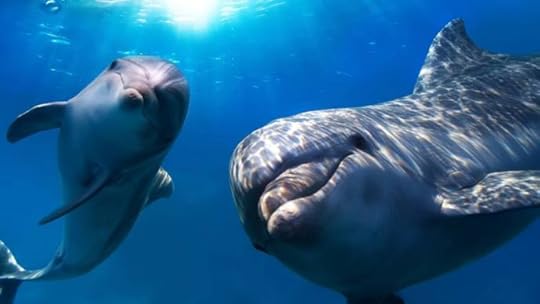
Evolution understands this too well— and now, a recent study published in the Proceedings of the Royal Society B found that when a mammal becomes fully aquatic, it becomes nearly impossible to return to terrestrial landscapes.
Is evolution reversible?Around 350 to 400 million years ago, the first fish ventured onto land, developing primitive limbs that enabled them to move about. Over time, their descendants evolved into the tetrapods we know today.
While this transition from water to land occurred only once, the reverse transition from land to water has happened repeatedly, prompting researchers to question whether aquatic mammals could ever revert to a terrestrial lifestyle.
Belgian paleontologist Louis Dollo initially proposed that evolution was irreversible in the 19th century. Dollo’s law states that once a complex trait is lost in a lineage, it is unlikely to reappear in subsequent generations.
To investigate this idea in mammals, scientists analyzed over 5,600 mammal species, categorizing them into four groups: fully terrestrial, semi-aquatic with some land mobility, limited land locomotion, and fully aquatic species such as whales.
“One of the main points of our work was to include the entire gradient of adaptations from fully terrestrial to fully aquatic forms and to test if these adaptations were irreversible,” said lead study author Bruna Farina, a doctoral student at the University of Fribourg in Switzerland, in a Live Science article.
The study revealed a threshold between semi-aquatic and fully aquatic species. Once this threshold is crossed, the adaptations to an aquatic lifestyle become irreversible.
Transitioning to aquatic environments necessitated multiple changes, including increased body mass to retain heat in colder surroundings and a carnivorous diet to support their heightened metabolism. These adaptations could hinder competition against terrestrial organisms.
While shifting from fully terrestrial to semi-aquatic in incremental steps is possible, the researchers concluded that an irreversible threshold exists for particular aquatic adaptations.
“We found that it’s possible to go from fully terrestrial to semiaquatic in [small steps], but there’s an irreversible threshold for some aquatic adaptations,” Farina said.
Therefore, she explained that the chance of fully aquatic animals, like whales and dolphins, returning to the land is virtually zero.
RELATED
Intelligent life more likely to evolve in oceans New research reveals the ancient origins of earth’s continents Age of universe is 26.7 — not 13.7 — billion years, claims new studyFull story: Interesting Engineering
June 17, 2023
Why orcas are attacking boats near Gibraltar
A 2022 study has shed light on the reasons why orcas (killer whales) have been attacking boats in the Strait of Gibraltar, with researchers theorising that the incidents began after a vessel injured a female orca named White Gladis.
Since the attacks began in 2020, three boats have been sunk and more than 250 damaged by a group of orcas, with the animals appearing to deliberately target the vessels’ rudders.
Of the 35 killer whales in the region, 15 are reported to have been involved in the highly unusual interactions, which experts think began after White Gladis’ behaviour altered in a ‘defensive’ fashion after she suffered a ‘critical moment of agony’ involving a boat collision or illegal fishing entrapment – leading to other orcas damaging passing vessels in response.
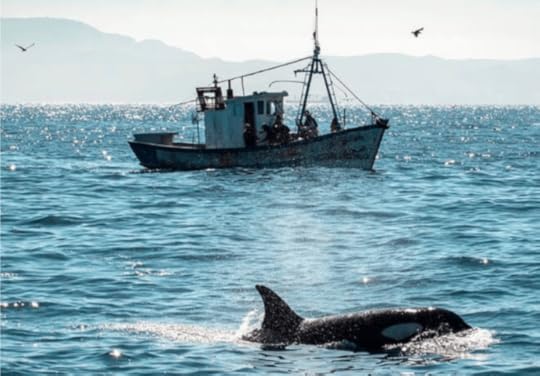
A study published in June 2022 in the journal Marine Mammal Science has found that assaults by the orcas are directed mainly at sailing boats. There is a clear pattern of orcas striking the rudders, with spade rudders the most targeted and damaged type, and then losing interest once the boat has successfully stopped.
Full story: Dive Magazine
October 8, 2022
Russia using dolphins to defend key waters as Crimea bridge blown up
Vladimir Putin’s war chest reportedly includes a unit of military dolphins trained to attack enemy divers.
The Russian President’s war efforts were rocked on Saturday when a section of the Kerch Bridge – which links Russia with Crimea – was blown to bits in a suspected Ukrainian attack.
Speculation over the mode of attack has been feverish, with some suggesting a covert operation by a specialised team in the Ukrainian military and others raising the possibility of a long-range missile.
The Kerch bridge was guarded on all fronts with missile defence systems, fighter jets, warships, military divers and heavy artillery.
But one small detail spotted in the dramatic footage of the blast has brought the role of Russia’s military dolphins back into sharp focus.
In one CCTV clip, a small wave appeared to roll under the bridge just before the explosives were detonated, fuelling speculation about the possibility of Ukrainian special forces using a boat or water-based drone to launch the attack.
This is exactly the type of attack that the navy dolphins have allegedly been trained to intercept, with reports that the mammals are patrolling the waters across the Azov and Black Sea ready to hunt down enemy frogmen.
While their deployment during the Ukraine conflict is unconfirmed, further speculation over the use of the mammals arose when satellite images showed two dolphin pens were moved to Russia’s Sevastopol harbour naval base – which sits on the southern tip of Crimea – in February of this year.
Russia has a history of training dolphins for defence purposes including the clearance of underwater mines and the protection of military sites and ships from the threat of covert enemy divers. The Russian government first started exploring the military uses of marine mammals at the Sevastopol naval base during the Soviet era.
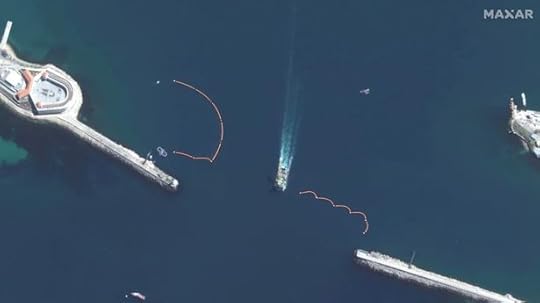 Russia has reportedly been using dolphins to protect its Black Sea naval base at Sevastopol bay in Crimea
Russia has reportedly been using dolphins to protect its Black Sea naval base at Sevastopol bay in CrimeaThe US and Russia developed the use of military dolphins during the Cold War, harnessing their echolocation capabilities to detect underwater objects such as mines.
More recently, satellite imagery captured in 2018 revealed that Russia was using dolphins at its naval base in Tartus, Syria during the Syrian civil conflict. The US is reported to have spent almost $30m maintaining its own battalion of military dolphins.
Full story: The Sun
September 1, 2022
Male dolphins form lifelong bonds that help them find mates
In behaviour only previously seen in humans, ‘social brain’ helps dolphins form complex alliances to see off their rivals for females
Dolphins form decade-long social bonds, and cooperate among and between cliques, to help one another find mates and fight off competitors, new research has found – behaviour not previously confirmed among animals.
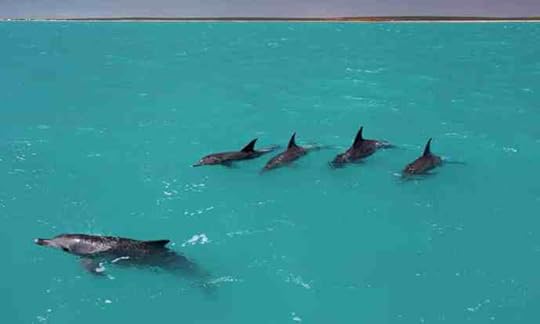
“These dolphins have long-term stable alliances, and they have intergroup alliances. Alliances of alliances of alliances, really,” said Dr Richard Connor, a behavioural ecologist at the University of Massachusetts Dartmouth and one of the lead authors of the paper. “But before our study, it had been thought that cooperative alliances between groups were unique to humans.”
The findings, published on Monday in the journal Proceedings of the National Academy of Sciences, appear to support the “social brain” hypothesis: that mammals’ brains evolved to be larger in size for animals that keep track of their social interactions and networks. Humans and dolphins are the two animals with the largest brains relative to body size. “It’s not a coincidence,” Connor said.
Connor’s team of researchers collected data between 2001 and 2006 by conducting intensive boat-based surveys in Shark Bay, Western Australia. The researchers tracked the dolphins by watching and listening to them, using their unique identifying whistles to tell them apart.
They observed 202 Indo-Pacific bottlenose dolphins (Tursiops aduncus), including during the peak mating season between September and November.
Back in the lab, they pored over data focusing on 121 of these adult male dolphins to observe patterns in their social networks. And for the next decade they continued to analyse the animals’ alliances.
Dolphins’ social structures are fluid and complex. The researchers found alliances among two or three male dolphins – like best friends. Then the groups expanded to up to 14 members. Together, they helped each other find females to herd and mate with, and they help steal females from other dolphins as well as defend against any “theft” attempts from rivals.
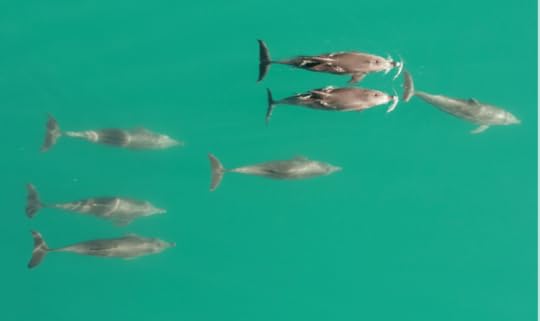
“What happens as a male, you might be in a trio, herding a female. And if someone comes to take that female, the other males in your team and your second-order alliance come in and help you,” said Dr Stephanie King, professor in animal behaviour at Bristol University and one of the authors of the study. “These males have a very, very clear idea of who is in their team.”
These teams can last for decades and are formed when the dolphins are still young, although they do not tend to reap the rewards of paternity until their mid-teens, King said. “It’s a significant investment that starts when they’re very young – and these relationships can last their entire lives.”
Sometimes, especially when dolphin groups feel there is a risk to themselves, two second-order alliances will also come together to form a larger team. As a result, among the dolphins observed by the scientists, every male was directly connected to between 22 and 50 other dolphins.
The researchers’ observations show that in these groups, the tighter the clique – and the stronger the bonds between the dolphins – the more success they have attracting females.
It’s their cooperative relationships, rather than alliance size, which gives males more breeding success, said King.
It is already widely known that dolphins are highly social and cooperative, as well as being remarkably good at adapting to and teaching behaviour specific to their environment, said Stephanie Venn-Watson, former director of Translational Medicine and Research at the National Marine Mammal Foundation in San Diego, California, who was not involved in the study.
Full story: The Guardian
July 11, 2022
Faroe Islands to limit dolphin hunt after outcry
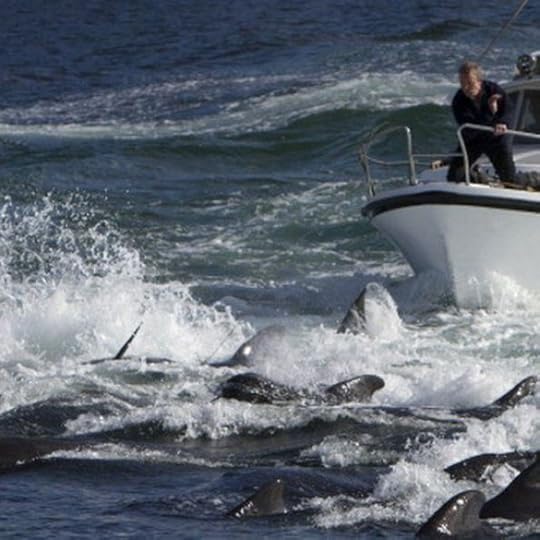
The Faroe Islands is to provisionally limit its controversial dolphin hunt to 500 animals, after receiving widespread criticism over last year’s cull, where more than 1,400 were killed.
A review was ordered in February, in response to the outcry.
Animal rights activists have long decried the hunt, deeming the slaughter cruel and unnecessary.
Faroe Islanders give the practice their broad support, arguing the dolphins have fed them for centuries.
Known as the grind (or Grindadrap in Faroese), the hunting of sea mammals – primarily whales – is a tradition that has been practised for hundreds of years on the remote islands, a Danish autonomous territory in the North Atlantic.
But the scale of the killing last year shocked many locals and even drew criticism from groups involved in the practice. Records showed that it was the largest number of dolphins ever killed on one day in the Faroe Islands.
Anger over killing of 1,400 dolphins in one dayA petition with almost 1.3 million signatures calling for a ban on the traditional hunt was submitted to the Faroese government.
Now the government has limited the annual catch of white-sided dolphins to 500 for the next two years. Only the dolphin hunt is currently being reviewed, not the entire grind tradition.
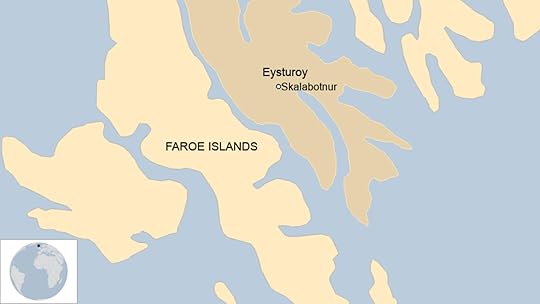
The quota was set after the “unusually large catch” of 1,423 white-sided dolphins in September, the government said in a statement.
Full story: BBC
May 1, 2022
Russia deploys trained dolphins at Black Sea naval base
Russia has deployed trained military dolphins at its naval base in the Black Sea – possibly to protect its fleet from an underwater attack – according to new analysis of satellite images.
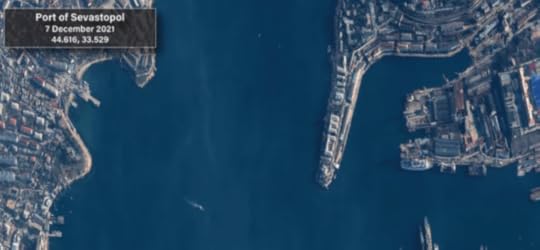
The US Naval Institute (USNI) reviewed satellite imagery of the naval base at Sevastopol harbor, and concluded that two dolphin pens were moved to the base in February at the start of Moscow’s invasion of Ukraine.
Russia has a history of training dolphins for military purposes, using the aquatic mammal to retrieve objects or deter enemy divers.
The Sevastopol naval base is crucial for the Russian military, as it sits in the southern tip of Crimea which Moscow seized in 2014. According to the USNI’s analysis, many of the Russian ships anchored there, while out of range from missiles, are potentially vulnerable to undersea attacks.
Ukraine had also trained dolphins at an aquarium near Sevastopol, in a program born out of a Soviet-era scheme that fell into neglect in the 1990s.
During the cold war, both the US and the Soviet Union developed the use of dolphins whose echolocation capabilities can allow them to detect underwater objects such as mines.
The US has spent at least $28m maintaining its own troops of dolphins and sea lions – which are also trainable – to potentially help with conflicts.
The Sevastopol program was resurrected in 2012 by the Ukrainian navy, but the mammals fell into Russian hands after the 2014 invasion of Crimea. Ukraine unsuccessfully demanded the return of the animals, and RIA Novosti reported that Moscow planned to expand the scheme.
“Our specialists developed new devices that convert dolphins’ underwater sonar detection of targets into a signal to the operator’s monitor. The Ukrainian navy lacked funds for such know-how, and some projects had to be mothballed,” one source told the Russian news agency.
Two years later, the Russian navy announced plans to buy five more dolphins, launching a bidding process for a 1.75m ruble – about $21,000 – contract to deliver dolphins to the Sevastopol base by the end of the summer. It is unclear whether the dolphins believed to be in Sevastopol today are the same ones that came out of this contract.
Full story: The Guardian
September 14, 2021
Dolphins save swimmer lost for 12 hours at sea
A lost swimmer was found off the coast of Ireland thanks to a few helpful dolphins.
The swimmer, who had been missing for nearly 12 hours, was spotted on Aug. 22 by Royal National Lifeboat Institution (RNLI) volunteers when they saw him surrounded by a pod of dolphins, BBC reports.
“At 20:30, the volunteer lifeboat crew with Fenit RNLI spotted a pod of dolphins and a head above the water about two-and-a-half miles off Castlegregory beach,” the RNLI said. “The casualty was conscious and immediately recovered onto the lifeboat and brought to Fenit Harbour to be taken to hospital.”
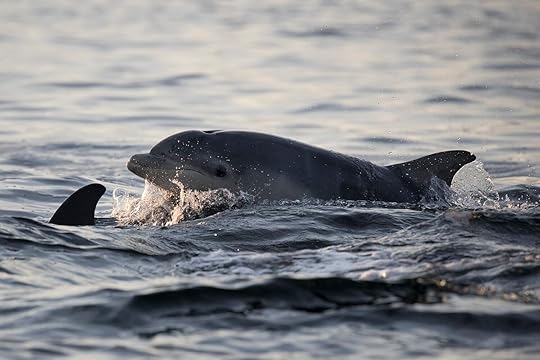
The swimmer, who was identified as a man in his 30s from County Londonderry, was “hypothermic and exhausted” when he was rescued, and had only been wearing a swimsuit after hours spent in the chilly waters.
The man told his rescuers he had been trying to swim out to Mucklaghmore Rock, which is over five miles from the beach where his clothes had been found. His abandoned belongings are what sparked the search.
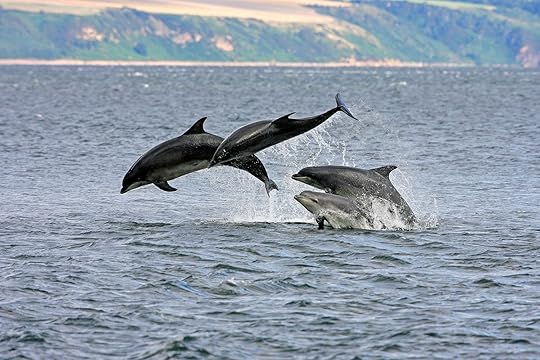
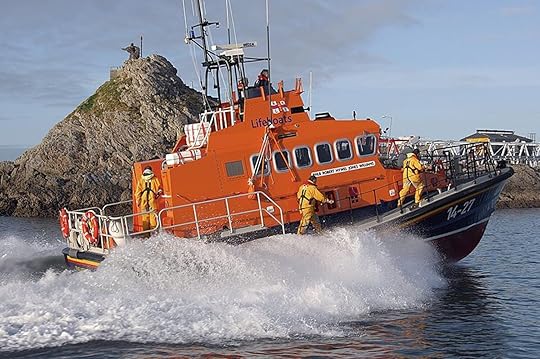
Fenit RNLI’s Gerard O’Donnell told the BBC that the rescuers had been “scanning the water for any sign of movement and were worried with light fading that they would not find anyone,” before they discovered the man amongst the dolphins.
He has since been taken to University Hospital Kerry, where he is recovering.
The animals surrounding him were later identified as bottlenose dolphins living in Scotland’s Moray Firth. Since 2019, the dolphins have been spotted off the Irish coast.
RNLI coxswain Finbarr O’Connell told The Irish Independent there were “a lot of dolphins around” the man when he and his crew finally located the lost swimmer. He added, “Maybe they helped him in some way or another: who knows?”
Full story: people.com




